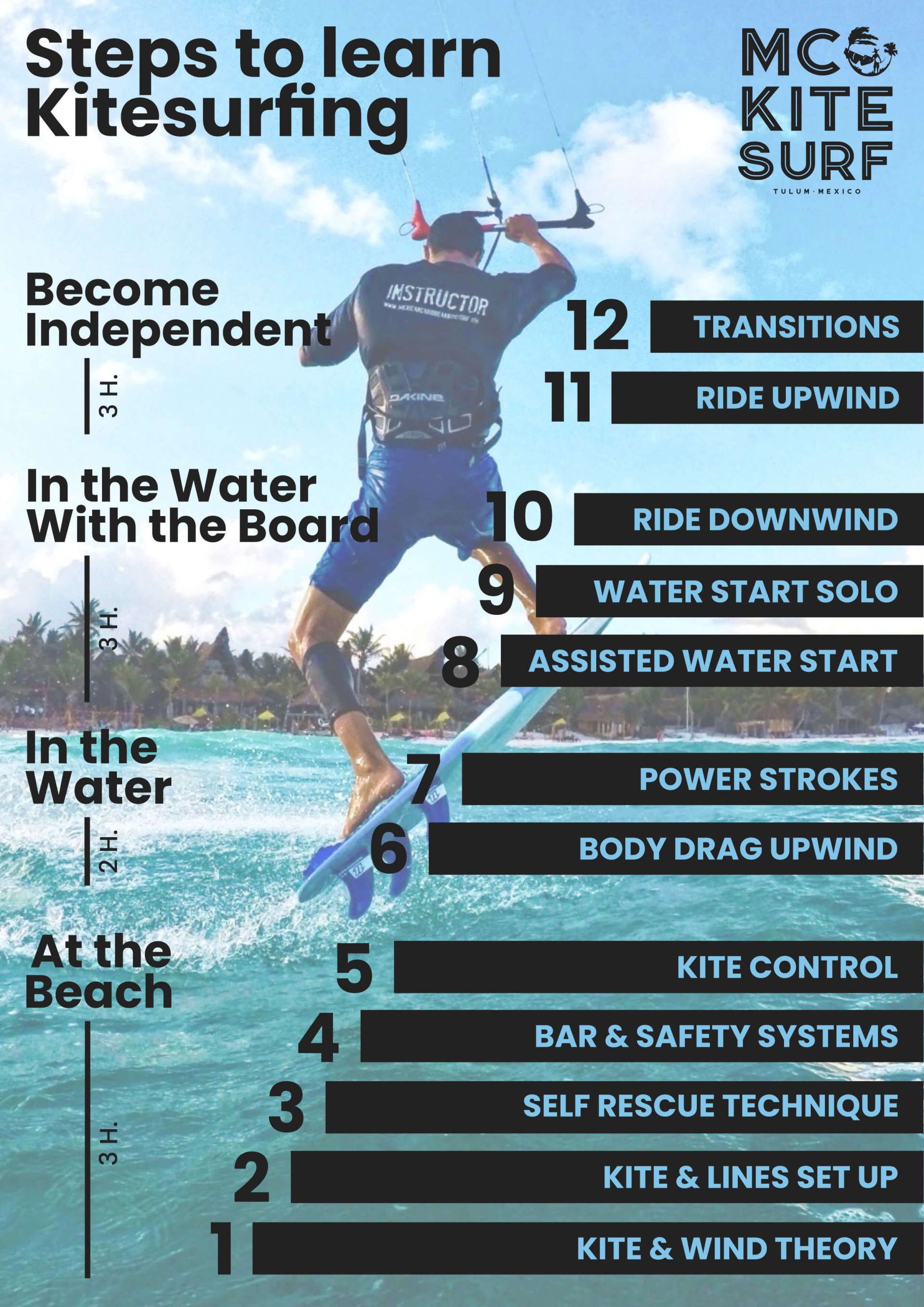kitesurf school tulum mexico, kitesurf school el cuyo yucatan
12 STEPS to learn kitesurfing.
KITEBOARDING IN TULUM
12 Step Program
How long it takes to learn to kitesurf? It depends on: the student skills, the wind conditions, and the sea conditions, among others. Approximately, it takes 3 to 4 hours to get to the board, and between 9 to 12 hours to become an independent kiteboarder.
We put together this 12 step program, so you can know exactly where you are in your learning process:
3 HOURS APPROX
AT THE BEACH
1
Kite & Wind Theory
This is an important part of the course, sometimes overlooked because people is not very much into theory. But completely necessary to set up the foundation of a good kitesurfer. It is a must to learn 3 basic things:
Where the wind comes from?
Wind directions in relation to shore and which one is better to kitesurf; and
The wind window theory
2
Kite & Lines Set Up
3
Bar & Safety Systems
4
Self Rescue
5
Kite Control
2 HOURS APPROX
IN THE WATER
6
Body Drag Upwind
7
Power Strokes
3 HOURS APPROX
IN THE WATER WITH BOARD
8
Water Start with assistance
9
Water Start solo
10
Ride Downwind
3 HOURS APPROX

